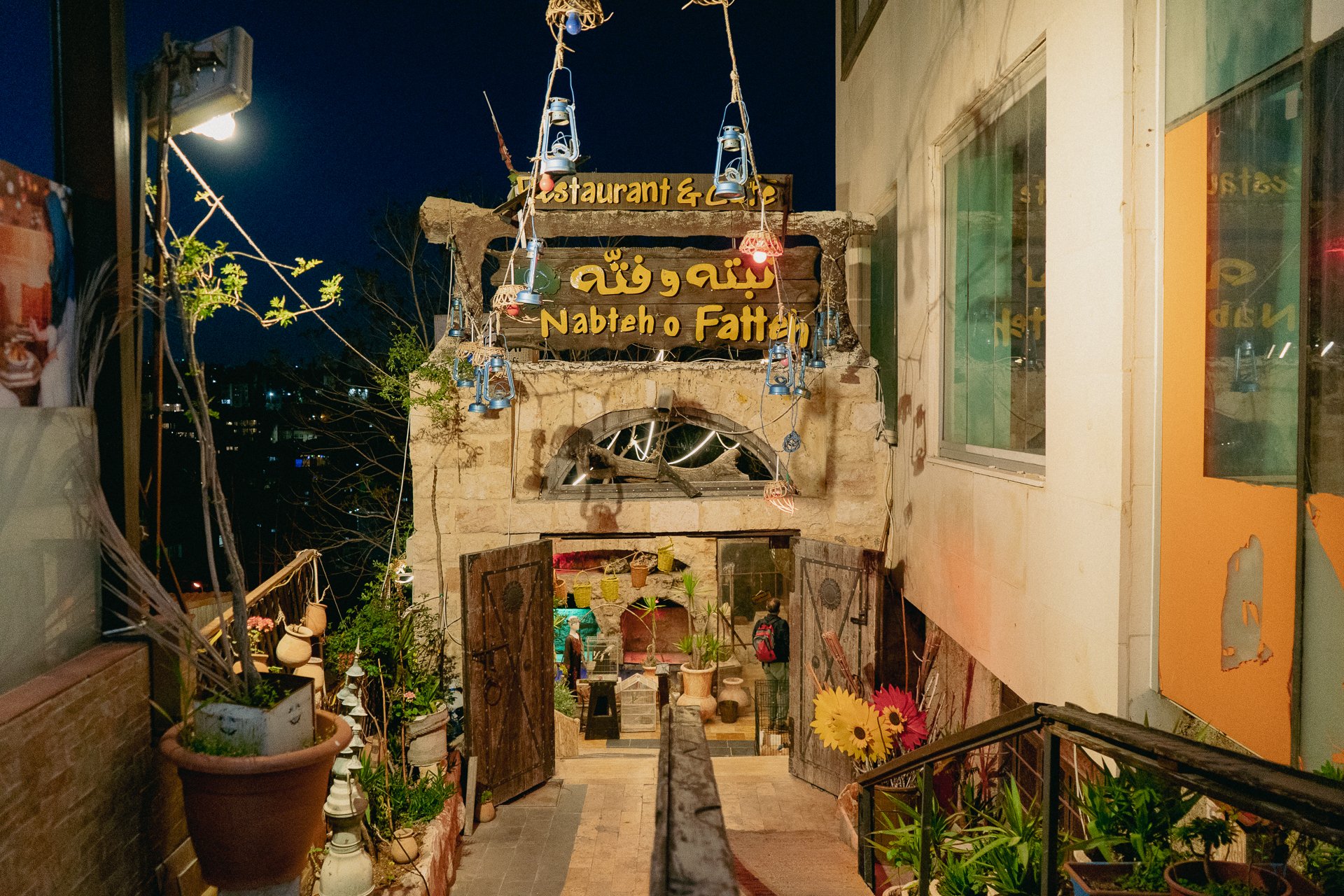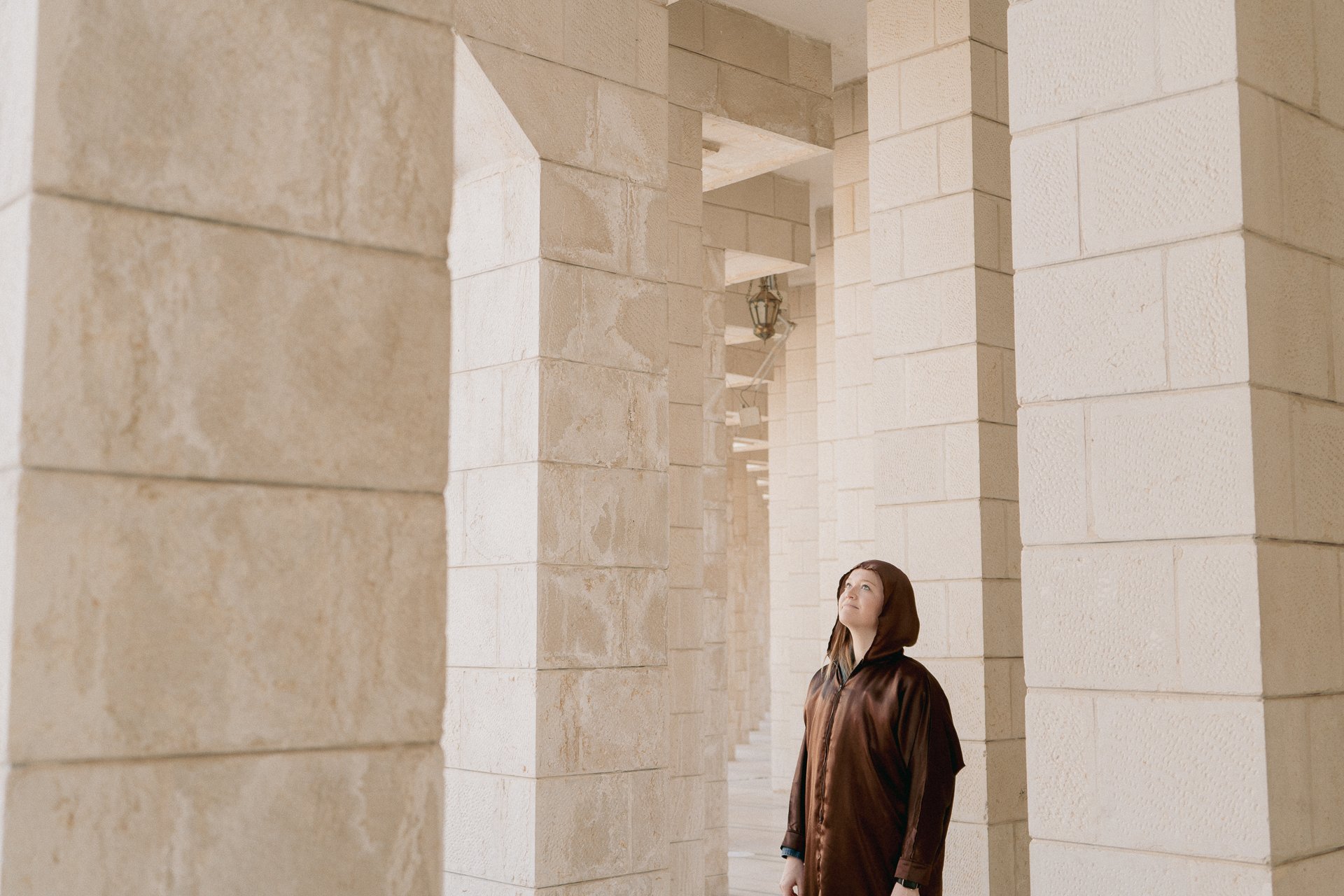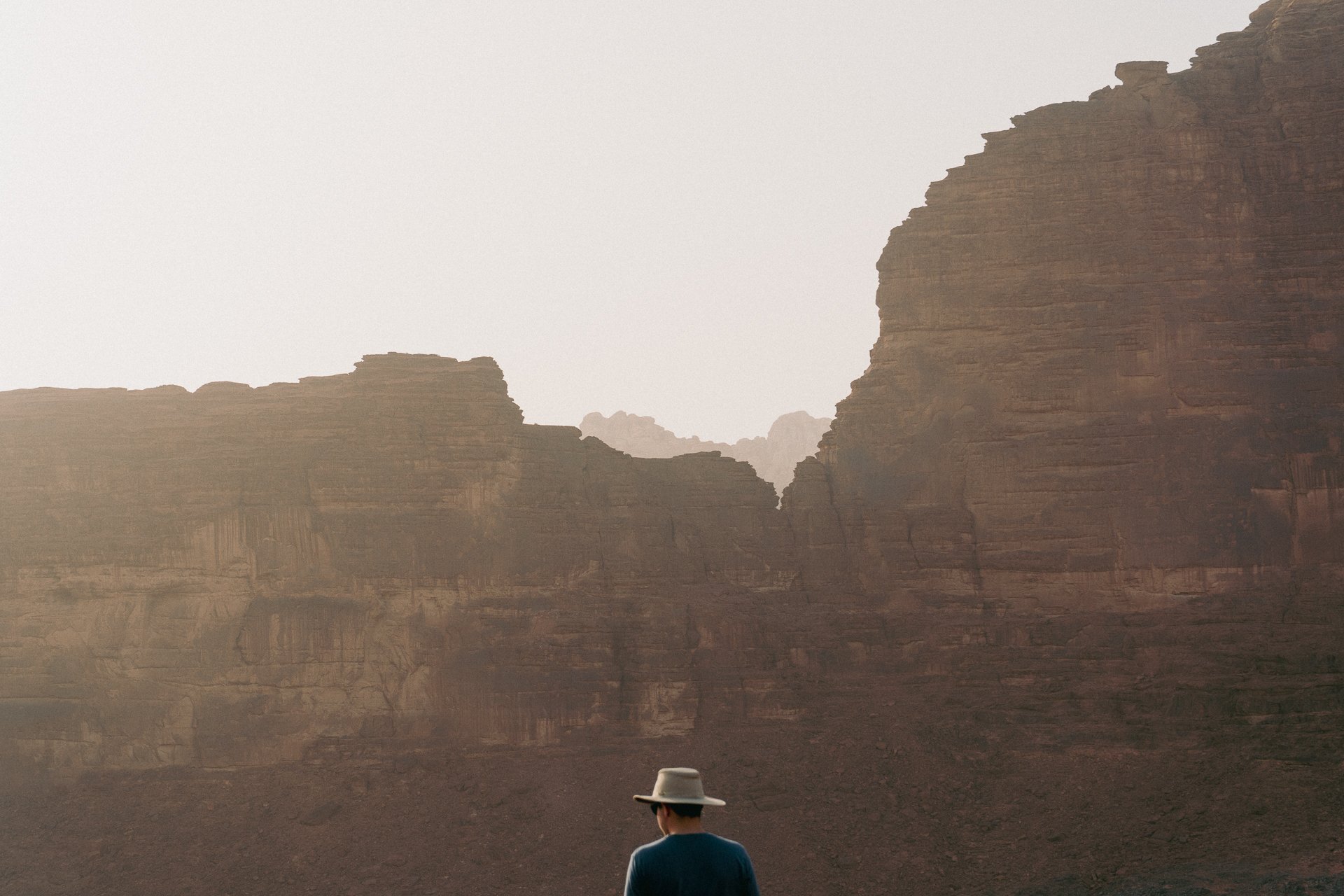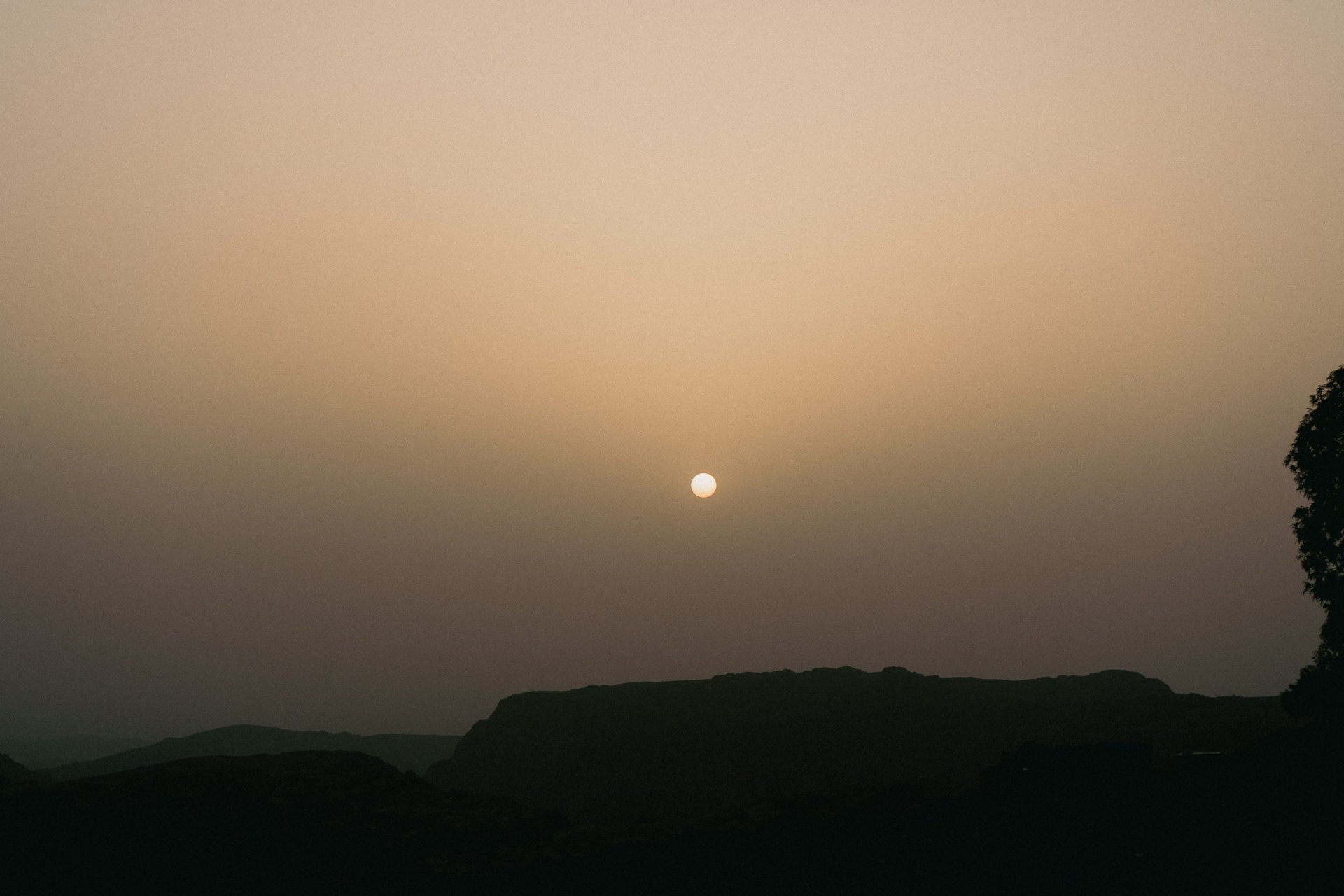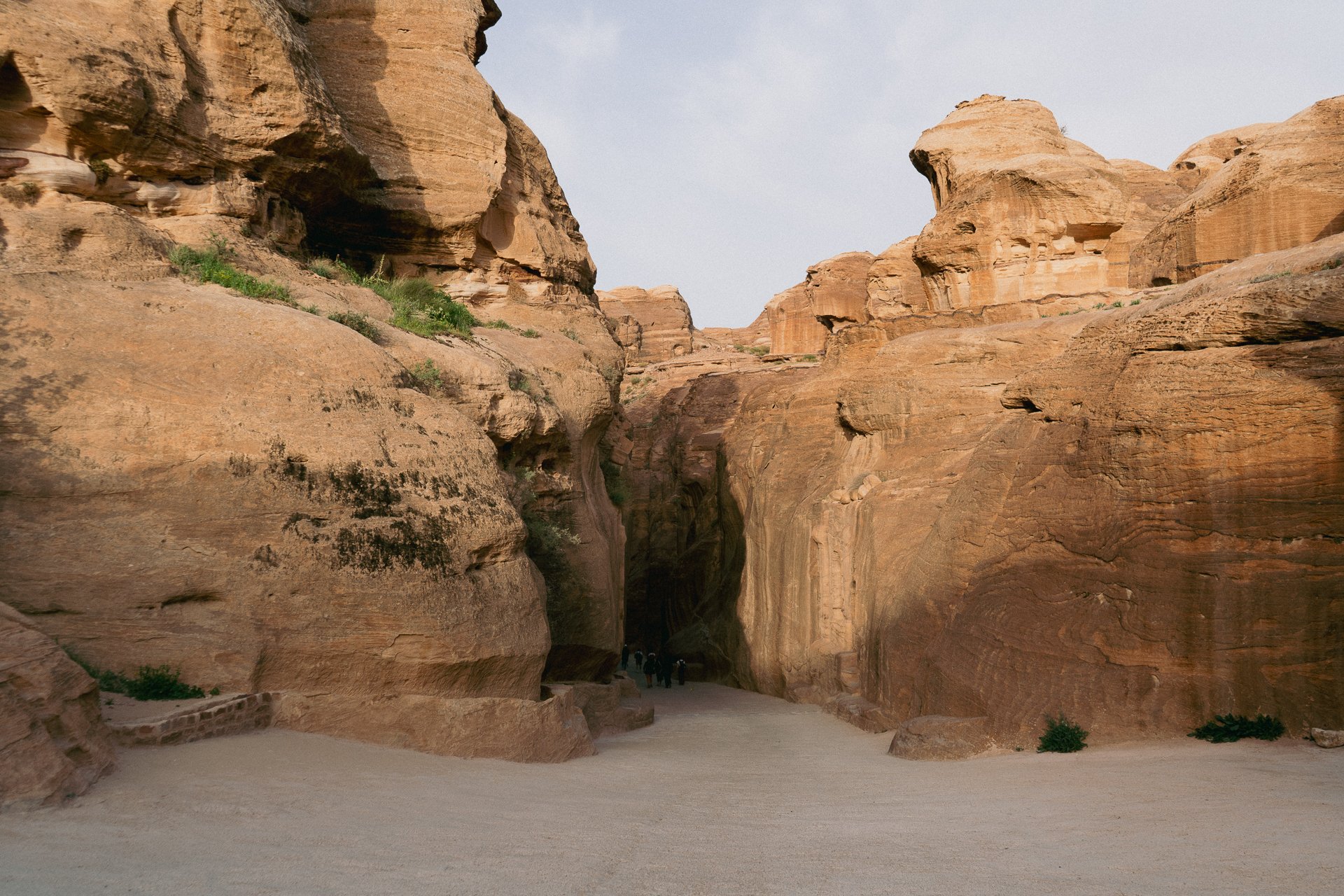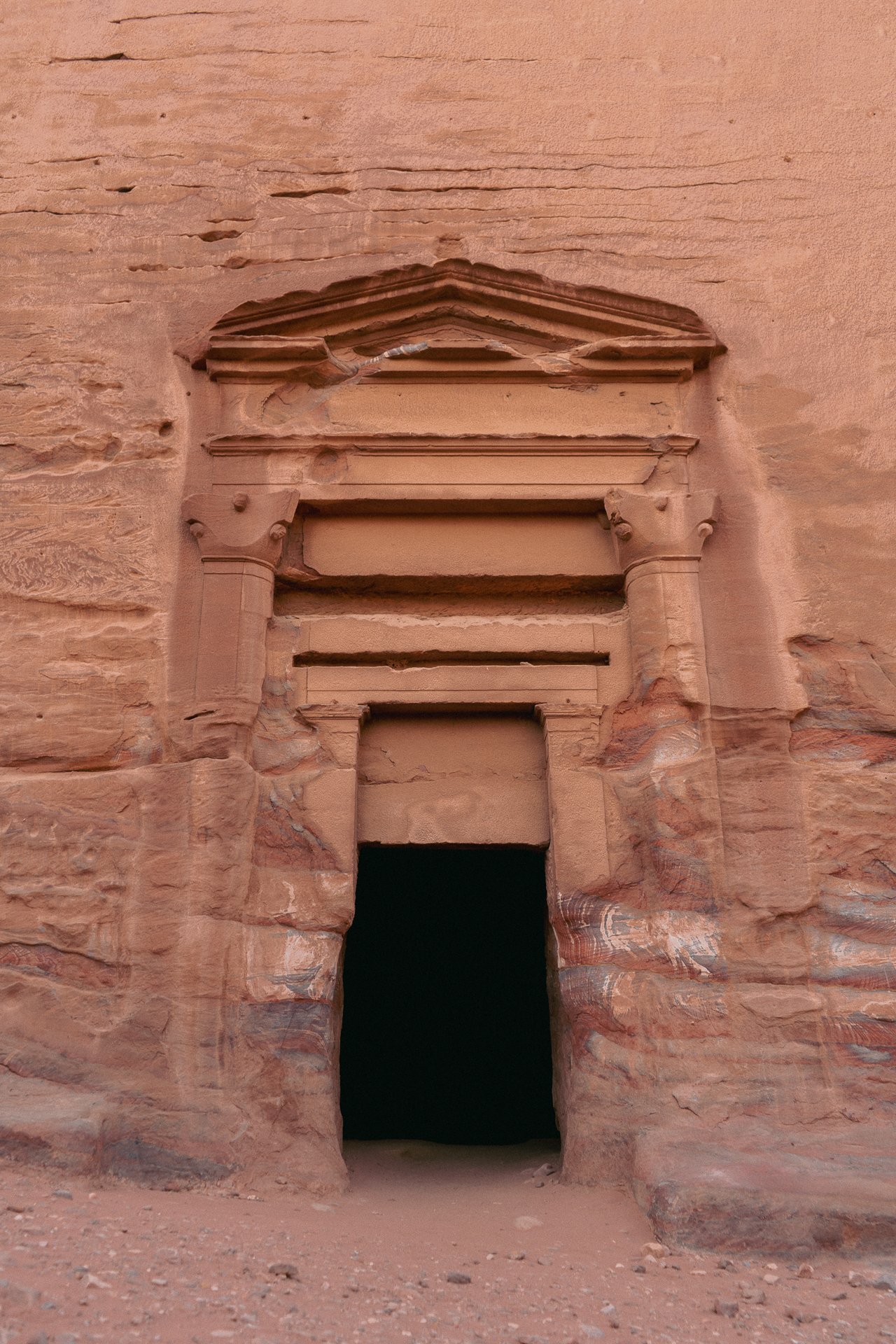Week 128-129: 5 days in Jordan
We spent five nights in Jordan–a middle-eastern country slightly smaller than the U.S. state of Indiana. From walking around enchanting ancient cities and floating in the mineral-rich waters of the Dead Sea, to sleeping under the stars in a glass dome in the Wadi Rum Desert, our Jordanian road trip was nothing short of epic.
Jordan has steadily risen to the top as a destination for travellers around the world, like us, thanks to its dreamy landscapes like the Dead Sea, the Wadi Rum Desert, and the ancient city of Petra, as well as, the Baptismal Site of Jesus and film locations of Martian, Star Wars, and Indiana Jones, and the hundreds of thousands of posts on Instagram as proof of its dreamscapes.
I never considered going to Jordan for vacation until I saw pictures of it on Instagram last year. Before I was able to see the beauty, I saw how close it was to neighboring countries that are seen as hostile or dangerous to an American being bordered by Saudi Arabia to the south and east, Iraq to the northeast, Syria to the north, and Israel and Palestine to the west.
As I began the planning process researching safety advisories, must-see attractions, and the best months to visit, every guide said to visit March-May…so we settled on April 5-10, 2023. This would ensure we arrived after the rainy season and before the scorching heat of summer, but it also meant we were going to experience Jordan during Ramadan–the holy month of fasting and reflection where muslims do not eat from sun-up to sun-down. While I was a little concerned with whether or not we would find food during the day, I was mostly excited to hear the echoes of prayer calls and experience a completely different culture than what we have always known.
This was our itinerary
Day 1: Amman
Day 2: Amman / Jerash / The Dead Sea
Day 3: The Dead Sea / Wadi Rum
Day 4: Wadi Rum / Petra
Day 5: Petra
Day 6: Return to Amman
And this is our recap––
Wednesday, April 5
10:30 AM
From Vienna, we boarded a plane headed for Amman–Jordan's capital city.
Jordan from the airplane
3:00 PM
After a three-hour flight and a one-hour time change, we landed in Amman. This is the largest city in Jordan with 4.5 million people and is known as “the City of Seven Hills” with eight roundabouts. Like traveling into any new country, you have to go through customs and Jordan requires all travellers to have a visa. The Jordan visa fees are waived if you bought the Jordan pass. This pass also gives you free entry to several attractions all over the country so purchasing the pass was a no brainer.
4:00 PM
We picked up our rental car and they insisted we get extra insurance, but we declined any extras as we were already covered and felt this was just a way of getting scammed to spend more money. The moment we began our 40-minute drive to the hotel we started second guessing our decision. Driving in Amman is not for the faint of heart. Herds of sheep and wild dogs, hitch hikers standing on the sides of the road, streets with barely any lanes, and the drivers are quite chaotic. Add in a few roundabouts and the chaos just got worse.
5:00 PM
Located atop one of the seven hills of Amman, and just off the third circle, we pulled up to the InterContinental Jordan hotel.
The InterContinental Jordan hotel
Once we got checked-in and settled, we headed back outside and walked down the hill towards Rainbow street, a cobblestone lane flanked by native shops and dining spots. As the day was approaching sunset, restaurants were preparing for the Iftar prayer and the big rush of people that would follow shortly after.
6:45 PM
A lot of businesses were closed, but fragrant street food wafted through the air as sounds of honking cars passed by. We walked into Nabteh o Fatteh. A restaurant and cafe with an awesome atmosphere, delicious Arabic and Western menu items, and a beautiful view at the terrace.
Dinner in Amman at Nabteh o Fatteh
A few locals were sitting inside, but without any food or drinks until 7:00 PM came around. The prayer call was made across the entire city using speakers adorned to mosques. This prayer known as “Iftar” marks the time when muslims are able to eat again. To hear the sounds I had been imagining for months in real life put us in a state of awe and intercultural bliss.
Jordanian cuisine is known for its delicious flavors and unique dishes, and it is extra special during Ramadan. From the national dish of mansaf, made with lamb, rice, and yogurt, to other popular dishes like falafel, hummus, shawarma, and baklava, Jordanian cuisine offers a diverse and delectable culinary experience.
Views from our dinner table
Dinner in Amman
Thursday, April 6
9:00 AM
After a large breakfast at the hotel, we ordered an Uber to take us to the King Abdullah Mosque. This is the only mosque in Amman that openly welcomes non-Muslim visitors.
Address:
Suleiman Al Nabulsi St. Jebel LweibdehHours:
Saturday-Thursday
8:00 - 11:00 AM
12:30 - 2:00 PMPrice:
Admission including museum 2JD
The King Abdullah Mosque
This blue-domed landmark is decorated with Quranic inscriptions and the large prayer hall holding 7000 worshippers plus a small women’s section and a royal enclosure. The blue color of the dome symbolizes the heaven, while golden lines inside the prayer hall represent rays of sun light illuminating the 99 names of Allah.
The King Abdullah Mosque courtyard
A few things to keep in mind when visiting a mosque as a tourist–
Women are required to cover their hair
Abayas (full-length, loose cloaks) are offered at the entrance to cover bare arms, legs or jeans
Shoes must be removed before entering the prayer hall
Beneath the mosque is a shop housing a small collection of pottery, rugs, mosaics, scarves, and other souvenirs.
Wearing the Abayas
Inside the mosque
9:45 AM
Our next stop was the citadel, an ancient ruin at the top of another hill. This is the spot I had been looking forward to the most because it offered the best views of the gritty city, and hillsides blanketed with off-white, boxy homes. This architecture felt different from any other place we have travelled to before and was just one of the things that reminded us we were no longer in our comfy American / European bubbles anymore.
Eric looking out at the hillside and the amphitheatre below
Posing with the Citadel
Views from the citadel and birds flying above old town
Citadel Ruins
11:00 AM
A 15 minute walk from the citadel is the roman amphitheatre. A 6,000-seat, 2nd-century Roman theatre and a famous landmark in the Jordanian capital. Today, the theatre is used as a venue for cultural activities such as international fairs and festivals. Centuries ago this theatre was thought to be more of a religious venue as there was a small shrine above the top row of seats that once housed a statue of the goddess Athena (now in the Jordan Museum), who was prominent in the religious life of the city.
It was built on three tiers: the rulers sat closest to the action, the military secured the middle section, and the general public and women perched and squinted from the top rows. Since we would be the general public, we made the steep and narrow climb up to the top. While far from the entertainment, it had a better view of the surrounding hills.
The walk from the ampetheater to our hotel was far, and we had to get back before our noon checkout. So Eric negotiated with a taxi driver to take us back from an original price of 15JD to 5JD.
12:00 PM
We checked out of the InterContinental Hotel and drove to Jerash–an ancient city in northern Jordan, located approximately 50 minutes north Amman founded in the 3rd century BC. It is known for its well-preserved Roman ruins and is often referred to as the "Pompeii of the East".
Price
Free with the Jordan PassRamadan Hours
8:30 AM - 6:00 PM
Hippodrome arches
The ruins of Jerash showcase an impressive array of Roman architecture, including colonnaded streets, grand theaters, temples, and arches, providing a glimpse into the city's rich history and cultural heritage.
Jerash columns
We passed by thousands of years of history as we walked under Hadrian’s triumphal arch, along the hippodrome where chariots once raced, and up the stairs to the Temple of Zeus, Temple of Artemis, and the North Theater.
Jerash was impressive and much larger than I imagined. Wildflowers grew up the sides of the ruins and massive pieces of columns lined the walkways. Since it was located on Jordans “King’s Highway” it was a prosperous place.
Wild flowers growing up an ancient ruin in Jerash
The north Theater
Ancient and Modern Jerash
The Temple of Artemis
The Temple of Zeus
After we spent two hours walking around Jerash, we were ready for lunch. Eating in the middle of the day posed no problem for us during Ramadan. We ate at a restaurant next to the ancient ruins serving a buffet of authentic Arab cuisine with a lot of stray cats waiting for someone to drop food.
Our morning of walking and admiring ancient ruins was done and we were enroute to “the lowest point on Earth” 90 minutes south of Jerash.
3:30 PM
We pulled up to Hotel Kempinski, a luxurious five-star resort situated on the shores of the famous Dead Sea.
Hotel Kempinski
The Dead Sea is a saltwater lake located between Jordan and Israel, known for its high salt concentration and unique properties due to its extreme salinity and mineral-rich mud. The sea is called "dead" because its high salinity means no macroscopic aquatic organisms such as fish or water plants can live in it. While this explanation sounds sad, the reality was a very cool experience.
At 6:00 PM, we changed into our swimsuits, put on our white hotel robes, and walked down to the sea. It is recommended to float for 10 minutes, then apply the mineral-rich mud all over your body and let it dry to 15 minutes, and then get back into the water for 10 minutes. For someone who literally can’t float in water, being able to completely lay back and float without sinking or worrying about critters below was incredibly relaxing. Add in the spa-ish mud treatment during sunset and it was even more magical.
Eric floating in the Dead Sea
Selfie by the Dead Sea
Me floating in the Dead Sea
A yellow wall with a bowl – Felt like an artsy composition.
We cleaned up from the salty sea and went down for dinner. For a moment, I felt like we were on a cruise ship as there were many food options to choose from and the beautiful views of Israel from the shores of Kempinski made our one night at the Dead Sea unforgettable. As we were finishing dinner we saw a news alert that Lebanon launched a rocket into Israel. It was pretty far from us, and we were totally safe, but just another thing that reminded us we were outside of our normal American / European bubble.
Friday, April 7
Views from our hotel room
The workweek in Jordan runs from Sunday to Thursday since Friday is the islamic holy day. I expected the day to feel a little different, but it really felt the same. Probably because we were in a luxury resort hotel and work hours here are pretty much 24-7.
We enjoyed this resort so much that we stayed as long as we possibly could. We put our swimsuits back on and headed outside for the Infinity pool where we just relaxed for a couple of hours before heading out to the next part of Jordan.
The infinity pool overlooking the Dead Sea
12:00 PM
20 minutes from the resort is The Baptismal Site of Jesus Christ. We arrived and were looking forward to seeing this religious place. However the line was long and the tour to the site was even longer. With having a 4 hour drive ahead of us…we made the decision to leave and make our way to the Wadi Rum desert.
To break up the drive, we wanted to stop at the Wadi Mujib canyon to do a cool hike, but due to flooding earlier in the season, the trail was sadly still closed.
4:00 PM
We pulled into the Wadi Rum desert–a protected desert wilderness in southern Jordan boasting with breathtaking red sand dunes, towering sandstone cliffs, and unique rock formations. Also known as the “Valley of the Moon” and the film location of famous movies like Star Wars and Martian.
We parked our rental car at the Memories Aicha Camp parking lot and a bedouin guide picked us up in a truck and drove us seven minutes to our Memories Aicha Campsite. As we were approaching, there were two camels out front!
Our martian bubble tent at Memories Aicha Camp
This Martian bubble tent was so cool and beautiful! It was a similar experience to our Finland igloo experience in week 115, but this was a million times cooler, much more private, and had its own shower facilities.
Our martian bubble tent interior
Behind our camp was a short hiking trail. We obviously made our way out of the tent and up the desert sandstone mountains for sunset.
The start of the hike behind our camp
Hiking views
Hiking views
Overlooking our camp in the Wadi Rum Desert
A jeep driving across the desert
The Wadi Rum sunset
Once the sun set, we made our way down to the big tent to enjoy a big Bedouin-style dinner feast.
Camp at night
Inside the big dinner tent
Saturday, April 8
6:00 AM
Eric’s favorite kind of sunrise is the kind where you can stay in bed. So as our alarms went off, I got up, pulled the curtains back and watched for blues and purples to turn into reds and oranges. We saw a pack of wild dogs outside and a crowd of people making their way outside for sunrise camel rides.
And this is the moment where I advocate not to ride camels or donkeys. Unfortunately, they are not treated as well as tourists would think. I witnessed a Bedouin handler punching a camel in the neck, and I saw a kid aggressively throwing water at a camel who was clearly in distress. We also watched videos that pleaded tourists to stop paying money to ride these animals because under the blankets and padding are scabs and wounds from consecutive rides being planned every day.
Views from inside our tent
9:00 AM
We embarked on a private 4-hour jeep tour with a Bedouin guide, Ali. He picked us up from camp and drove us around to all the desert monuments including a sand dune, a canyon, the Martian film set, a few desert arches, the sacred mushroom rock, and Lawrence Canyon.
Tourists walking down the sand dune
A coffee and tea shop by the sand dune
Desert views
Eric on the jeep tour
Eric posing on a desert mountain
Sitting under the Sacred Mushroom Rock
Sitting on the back of our truck
Jumping under Um Frouth Rock Bridge
Standing on the little bridge
Riding on the jeep tour. Our guide, Ali, helped me with my scarf head wrap 🙂
12:00 PM
Our time in the desert came to an end as we drove out of the desert and onto the paved road. We grabbed lunch at the visitor center, once again without any problems due to Ramadan, and then we drove to the highly-anticipated Petra.
3:00 PM
We arrived in the Taybeh Village, a 10-minute drive from the insta famous Petra and checked into Beit al Taybeh, also known as the Taybeh Village Guesthouse. The guesthouse is owned and operated by a local Bedouin family, providing an opportunity for travelers to interact with the local community and learn about their customs and way of life.
Entry to the guest house
Views from the guest house
The traditional Bedouin-style building is made of local stone reflecting the traditional architecture of the region and offers a variety of room options, a communal courtyard for relaxation, a dining room, and a rooftop where guests gather for sunset and tea each night.
One of the highlights of staying at Beit al Taybeh is the opportunity to savor authentic cuisine. Um Rashid is the name of the woman who cooked every meal for us and it was the best food we had on the entire trip.
Views from the guest house of the Taybeh village
As the sun set over the mountains, the prayer calls echoed throughout the village. Little kids from the nearby houses would yell out in English to the guests sitting on the roof asking what our names were and where we were from. It was a cute way for them to practice their English and for us to interact with the local families.
Sunset from the guesthouse roof
Sunday, April 9
6:00 AM
We kicked off Easter morning with an early start and a traditional breakfast provided by Um Rashid before we drove to Petra to beat the crowds and the heat.
6:30 AM
Since we picked up our Petra entry tickets the day before, we were able to walk right in.
Since we had the Jordan pass, we didn’t have to pay anything for the tickets.
Entry into Petra “Siq”
Tucked away in the desert mountains of southern Jordan, between the Dead Sea and the Gulf of Aqaba, lies Petra. A former trading city has acquired a few names like “The Rose City” because of its iconic rose-colored rock-cut architecture. As well as “one of the New Seven Wonders of the World” and a UNESCO World Heritage Site”, attracting visitors from all over the globe.
Eric walking in the canyon
This place reminded me of the only canyon i’ve ever been to in Arizona–Antelope Canyon.
Admiring the thought behind the drainage
Admiring the thought behind the drainage
As we stepped out of the canyon, and into the plaza, we stood infront of the most famous landmark in this ancient city – the Treasury along with a few wild, sleepy dogs and a couple of camels ready for photos.
A sleepy pup infront of the Treasury
This stunning facade carved into the canyon wall stands 130 feet high. Its sharp details have been preserved from wind and rain by the facade’s indentation in the rock wall. Especially impressive are the intricate figures and patterns carved between the columns.
Infront of the Treasury
Infront of the Treasury
A camel infront of the Treasury
Petra is not just limited to the Treasury, but is also home to a vast and intricate network of rock-cut tombs, temples, theaters, and other ancient structures that showcase the rich history and architectural prowess of the Nabataean civilization, which thrived in the region over 2,000 years ago.
From the Treasury, we walked through what was once the central street of Petra, past ancient temples, a marketplace and a spacious Greek-style amphitheater and onwards and upwards until we reached the Monestary.
One of many tombs
The red sandstone was so pretty!
Overlooking the amphitheatre
Camels trotting down the ancient road
My shadow at the Great Temple
The Lions Gate Temple
Once you reach the half way point, you learn reaching the Monestary requires climbing a winding trail of roughly 1000 narrow steps. With the afternoon sun, crowds, and people choosing to ride donkeys up the stairs, this part of the day was a little challenging.
Like the desert camels, here is our PSA to not ride donkeys. There were even signs and videos at the entry that said not to ride them because it's not safe, it actually causes the donkeys pain, and it is also encouraging child labor as many of the donkeys were guided by children who are supposed to be in school.
The Monastery
By 11 AM, we reached the Monastery. A much less ornate, but much larger structure than the Treasury. We took time to take some photos and buy a few drinks as this was the hottest day so far at 86 degrees.
The Monastery
The Monastery
The time came to walk back and we made sure to stop at a few more tombs and structures before we left.
Infront of the Royal Tombs
Scattered through the rock formations are remnants of tombs, which look like open-mouthed caves which were used for burial. Signs suggest nearly 800 tombs have been identified.
Infront of the Royal Tombs
Infront of the Royal Tombs
Within 90 minutes or so, we were back at the Treasury, which now appeared to have several shades of orange casted ontop thanks to the after noon light. Again, we were transfixed, and stopped to take more photos and videos.
The Treasury
The Treasury illuminated through the “Siq” canyon
This was our biggest walking day yet hitting 12.5 miles from the Petra visitor entrance to Monastery and back and it was a truly mesmerizing, bucket-list-worthy destination. We grabbed lunch by the visitor center and hung around until 4PM when we were able to check into our flight back to Vienna before heading back to the guesthouse where there was no WiFi.
6:30 PM
We sat on the rooftop drinking hot tea as we waited for a few other families to arrive at the guesthouse. Once they showed up, dinner was served and Um Rashid prepared a special ramadan dinner for everyone featuring squash soup, cucumber and tomato salad, Maqluba (rice and eggplant casserole), and Atayef (Middle Eastern pancakes).
Monday, April 10
8:00 AM
We had one last breakfast and tea on the roof before we said goodbye to the Taybeh Village and headed back to the airport.
One last view from the guesthouse
Now that we have had time to reflect on our time in Jordan, we would highly recommend going during Ramadan. Visiting during the holy month of Ramadan can be a truly unique and enriching experience.
From the sounds of the prayer calls echoing across the cities and mountains and partaking in Iftar meals with local families to observing the most majestic places in the country, this trip was one that left a lasting impression and stirred up the desire to continue exploring far away places.
Aside from the epic landscapes, one of the most memorable experiences of our time in Jordan was interacting with the locals. From the Uber driver in Amman, to the bedouin guide in the desert, and the little kids and Um Rashid in Petra, the people here were so friendly and welcoming.
A few helpful tips if you are adding Jordan to your future travel plans…
Rent a car, but skip the extra insurance if you are already covered
Have your wits about you when navigating the streets of Amman.
Almost everything is negotiable when it comes to hailing a taxi, taking a tour, or buying a souvenir.
You need a minimum of 5 days to see the main attractions’ highlights.
Buy the Jordan Pass here
If you rent a car, be aware that you will most likely be pulled over for a routine random check.
Don’t ride the donkeys in Petra or the camels in Petra
Stay at Beit al Taybeh for your time in Petra
Stay at the Memories Aicha Camp in the Wadi Rum Desert
Stay at Hotel Kempinski along the Dead Sea
Visit during Ramadan



